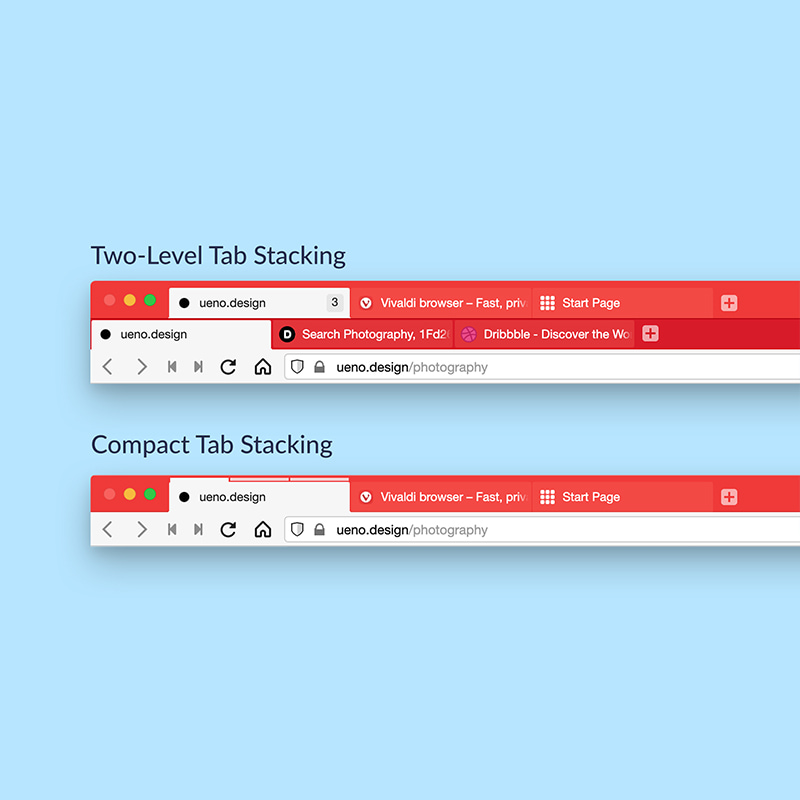
While browsing the web, people can literally get lost in whatever they are indulged in. And when it's already too late, they will have too many tabs opened.
Modern web browsers deal with this people's habit by collapsing the tabs, resizing them to as narrow as possible, to fit in even more opened tabs.
They also embed a search feature for the tab, have colored tabs, and more. Vivaldi however, takes a different approach.
Rather than tweaking the tab bar, the browser updates with the ability to have a second tab bar.
Back in the days when Vivaldi made its first public appearance on desktop, it unveiled 'Tab Stacks'. What it does, is group tabs together.
This time, it introduces the 'Two-Level Tab Stacks' which essentially takes tabbing to the next level.
Introduced on Vivaldi version 3.6, Vivaldi said in a blog post:
"Over the years, we have strengthened our comprehensive tab functionality with modern, built-in features that adapt to how you work today (even more so in times of remote-working)."
"Our plethora of tab features such as Tab Stacks, Tab Tiling, Vertical Tabs, and Auto Stacking help you view, manage, and navigate between tabs in the browser easily."
The Tab Stacks allow users to organize a group of tabs by dragging one tab on another.
By using a second tab, Vivaldi aims to make the browser window more tidy, as the stacks won't take up more space than a single tab.
"By simply clicking on a stack, you expand and show the content of the stack, with full-size tabs on a new line. Having full-size tabs means that you can manipulate them like any other tab, using the same methods to open, close, activate, move or select tabs within a stack," said Vivaldi.
This feature should be useful for those users who would browse with multiple tabs, but can get lost within them.
It should also be useful for those who who would like to display their stacked tabs in full size. This is because the Tab Stacked works whether the tabs are placed on the top, bottom, or to the side.
"The new, second level makes reorganizing stacks or creating new tabs within a stack a breeze. For example, the '+' button on the new line lets you easily create tabs within the stack. The feature offers all the other benefits of normal-sized tabs, like easier to read page titles, tab notifications, and (if enabled) tab thumbnails," explained Vivaldi.
What's more, tabs organized in Tab Stacks can be customized according to the way users want.
For example, users can drag them, hibernate, mute, or even rename them when they want.
In addition, the Two-Level Tab Stacks can be locked, avoiding unwanted changes to the page view height when switching between tabs.
The Tab Stacks feature is enabled by default, and users can easily switch between Compact and Two-Level Tab Stacks by heading to the Tabs in Vivaldi Settings.
While the Two-Level Tab Stacks is the main highlight of this Vivaldi version, users who wish to have a more clutter-free experience while using the browser, they may want to just use the Compact Stack.
At this time. this functionality is available just for the desktop version of Vivaldi.